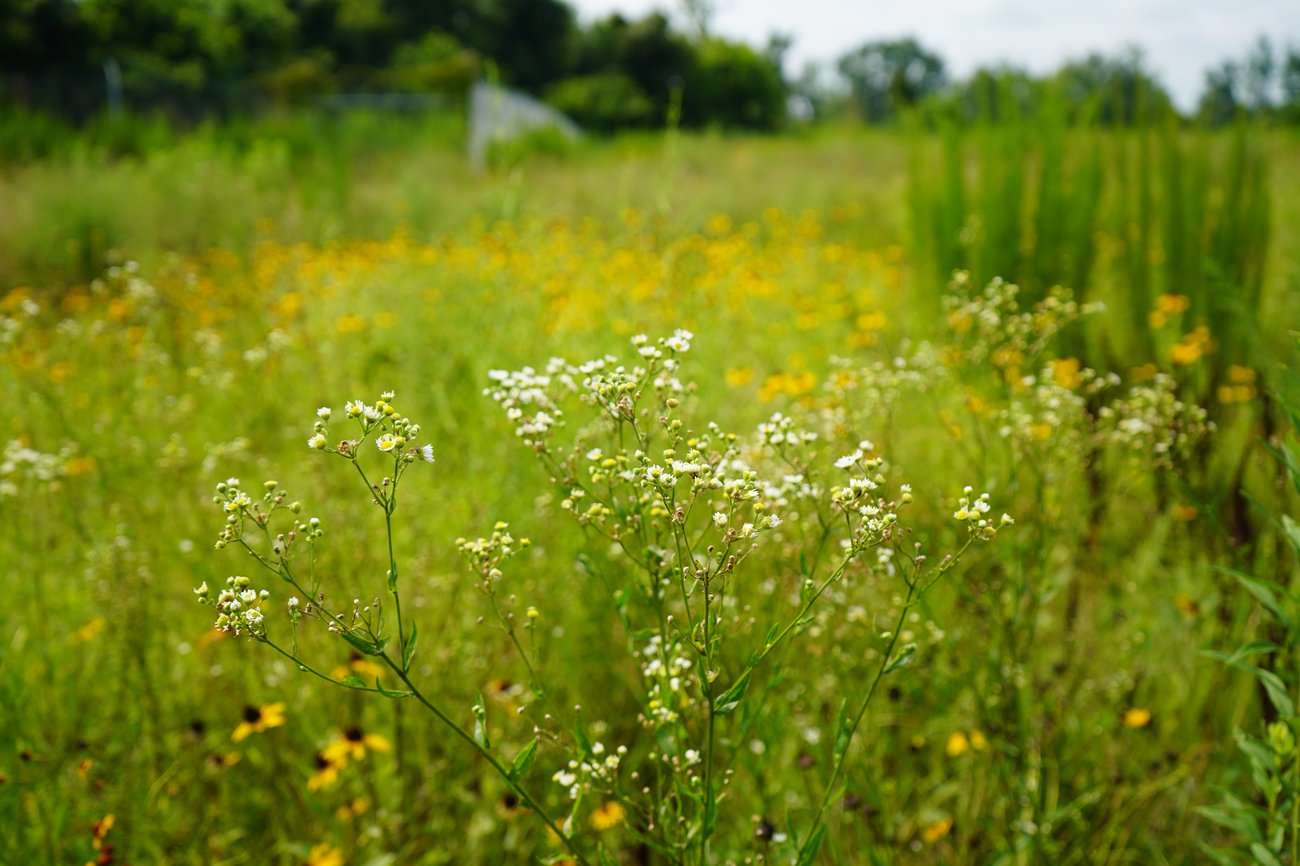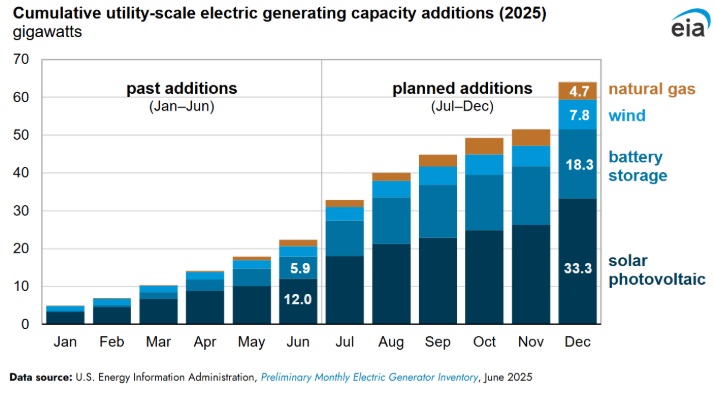|
|
|
Happy Friday!
August 22, 2025
|
|
|
|
This week, the Energy Right team was busy on the road visiting with multiple counties and community events in relation to clean energy initiatives.
|
|
|
|
|
|
|
|
Farmland Facts and Solar Strategies
|
 |
|
|
|
There’s been a lot of discussion lately about whether renewable energy projects are driving the decline in America’s farmland. It’s an important issue that intertwines two necessities—but the facts show a different story. The most recent data shows that even under the highest estimates, permitted solar projects account for only about 0.14% of total U.S. agricultural land. The far larger pressure on farmland comes from urban development like new apartment complexes, townhomes, etc. By 2040, urbanization through high-density and low-density residential growth is projected to consume 18.2 million acres of farmland; an impact much greater than that of solar, and while not contributing to the growing energy demand.
It’s important that local leaders recognize what is actually happening on the ground. Farmers across the country are using solar in ways that complement, not replace, agricultural production. Whether it’s grazing sheep under panels, rotating cattle on solar land, or pairing crops with solar generation, solar can create new income streams that help families keep their farms intact for the next generation. Solar energy projects have proven to be a valuable partner to farmers and producers across the country, especially those who want to preserve the land while not having the means to work the strenuous duty of growing and harvesting crops.
The path forward in Virginia should be one that protects property rights, supports farm families, and ensures local governments have the tools to work with developers and landowners responsibly. Misrepresenting solar as the main driver of farmland loss risks distracting from the far larger challenges facing American agriculture, and Americans altogether. Instead, by working with landowners, agricultural experts and developers, communities can ensure renewable energy development strengthens our rural economies and communities.
|
|
|
|
|
|
|
|
Buzz of the Week
|
|
|
 |
|
Hollyfield Solar Farm, VA
|
|
This field of wildflowers is grown alongside the solar panels at Hollyfield Farms. By planning out smart land use and utilizing the land agriculturally even when not farming with traditional methods, Hollyfield Farms is able to produce a large amount of honey, maintain a healthy flora, and preserve the land for future use.
|
|
|
|
Follow Us
|
|
|
|
|
|
|
|
|
|
From Progress to Pushback
|
|
|
|
|
In 2025, roughly 25 percent of proposed solar projects in Virginia have been denied thus far at the local level, signaling a growing roadblock to the Commonwealth’s ability to generate clean, in-state energy. These rejections are more than just procedural setbacks. They are actively limiting Virginia’s energy output and keeping the state locked into a costly and unsustainable cycle of energy imports.
Virginia now ranks first in the nation for energy imports, a troubling milestone for a state that once made meaningful progress toward energy independence. In his most recent State of the Commonwealth address, Governor Glenn Youngkin stated, “We now import roughly 40% of our power needs versus 18% in 2020. Worse yet, the cost of that imported power is almost 10 times higher than it was just one year ago.” This growing dependency drains resources from Virginia’s economy, increases costs for consumers, and exposes the state of supply risks if concessions with other states cannot be made.
If the current pace continues, the consequences for grid reliability could be severe. As older fossil fuel plants retire and our grid faces extreme load demands more and more frequently, the state should be looking to replace lost capacity with new energy generation in our all-of-the-above policy, which includes quick-to-deploy clean solutions.
For Virginia to build a reliable, affordable, and resilient energy future, clean energy development must be treated as a strategic priority. Local governments and state leaders have an opportunity to strengthen the Commonwealth’s energy independence by advancing well-planned projects that balance community needs with grid reliability. Taking that step will help reduce reliance on imported power while ensuring long-term stability for the Commonwealth.
|
|
|
|
|
|
|
|
|
|
|
|
Our team travelled to Carroll, Charlotte, Dinwiddie, Patrick, and Sussex counties on our mission for energy done the Right Way.
|
|
|
|
|
|
|
|
|
|
We join residents and local leaders at the Dinwiddie County hearing on August 19, where supervisors voted unanimously to reject a proposed solar project—a decision that shows the current divide throughout Virginia amid rising energy needs. We hope with future revisions and more adequately planned initiatives, more communities will find acceptable projects and guidelines for those looking to bring their business and developments to them.
|
|
|
|
|
|
|
|
33GW utility-scale solar installations forecast in 2025 – US EIA
– PV Tech
|
|
Despite pushbacks towards solar, the U.S. is on track for a record year in utility-scale energy additions, with the EIA projecting 33.3GW of new solar in 2025, more than half of all planned capacity growth. Over 21GW of that is expected in the second half of the year, alongside 12.4GW of storage, putting solar and batteries at the center of grid expansion.
Texas remains the engine of growth, accounting for more than a quarter of new solar capacity so far this year and leading in storage buildouts as well. Flagship projects like the 600MW Hornet Solar development highlight the scale of investment. If forecasts hold, 2025 will surpass the U.S. record set in 2002, proving solar’s role as the nation’s fastest-growing power source.
|
|
|
|
|
|
|
|
|
|
NEXT WEEK
We’ll be traveling through Norfolk and Sussex, and plenty more this coming week!
|
|
|
|
|
|
|
|
|
|
China’s deliberate overbuilding of electricity infrastructure has given it an enormous advantage in meeting the surging power needs of artificial intelligence. With reserve margins often double actual demand, the country can easily absorb data center growth, while U.S. grids are already strained by rising loads and political fights over energy costs.
Experts warn this gap is structural, not temporary. China plans energy capacity years ahead through state-directed investment, while U.S. projects often stall in permitting or fail to attract long-term capital. As AI accelerates energy demand worldwide, China’s abundance of power—and pragmatic approach to renewables—contrasts sharply with America’s grid bottlenecks, raising concerns about competitiveness and security.
|
|
|
|
|
|
|

